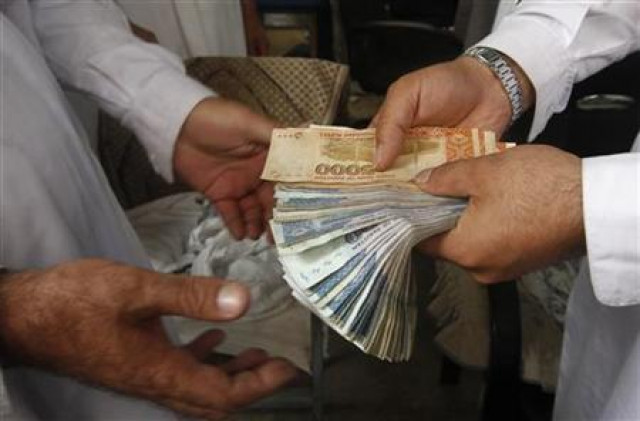Only Rs18b disbursed against Rs100b under PM youth loan scheme
Prime minister tasked central bank to monitor programme after NBP’s lack of response

Prime minister tasked central bank to monitor programme after NBP’s lack of response. PHOTO: REUTERS
However, the number of new applicants, approvals and disbursements steadily grew during the January-March quarter of 2017, showed State Bank of Pakistan’s (SBP) quarterly report on the PMYBL. The report has been released this week.
Prime Minister Nawaz Sharif had tasked the central bank to monitor the programme due to a lacklustre response of the National Bank of Pakistan (NBP) - the lead bank responsible for PMYBL implementation that kept dragging its feet till September last year.
Government disburses Rs17.6b as part of youth loan scheme
By end-March 2017, a dozen commercial banks disbursed Rs18.04 billion among the 18,015 beneficiaries, according to the January-March quarterly review of the SBP. The average loan size remained at Rs1 million. The disbursements were only Rs335 million higher compared with October-December 2016 quarter, according to the report. Only 325 new borrowers could be added during the January-March quarter.
The NBP disbursed the maximum amount of Rs17.3 billion among 17,252 beneficiaries. In order to deflect growing criticism against sluggish progress, the NBP had transferred about Rs8 billion in thousands of accounts but lien marked these accounts. Practically, borrowers could not draw money from their accounts after lien marking. A significant number of borrowers had refused to accept these loans that had been transferred into their accounts without their knowledge.
Nawaz Sharif launched the scheme in December 2013 with the aim of providing loans to youth in the range of Rs500,000 to Rs2 million and required funds valuing Rs100-200 billion. The government is going to complete its five-year constitutional term in June next year and it is highly unlikely that the Rs100 billion minimum disbursement target will be achieved. Sixteen commercial banks are offering the loan and 13 of them disbursed the loans.
The government is extending loans at 6% interest to borrowers while the rate of return for banks is one-year average Karachi Inter-bank Offered Rate (Kibor) plus 5%.
The banks are usually reluctant to extend small business loans due to high risks involved in it. The government remains the single largest borrower due to its growing budget financing needs that allow the banks to make risk-free gains.
The January-March quarterly review showed that 4,479 more people applied for the business loan in the first quarter of 2017, which was 6% higher compared to the October-December quarter. NBP - the country’s largest state-owned bank - received 4,244 applications in January-March quarter.
With fresh applications, 78,939 people applied for the scheme by March 31, 2017, according to the central bank. Of these, 13% were female, which is significantly lower than 50% quota reserved for the women under the scheme.
However, applications of only 21,734 people - about 28% - have been approved. The number of people who actually got cash was 18,015 - one out of every five applicants but better than the performance a year ago.
Millions embezzled in PM’s loan scheme
The prime minister has in the past expressed his dissatisfaction over the pace of loan disbursements and denial of credit to the applicants.
In the January-March quarter, commercial banks sanctioned Rs531 million in fresh loans, up just 2% from the October-December quarter. In the first quarter of 2017, NBP approved Rs431 million worth of credit whereas other commercial banks sanctioned Rs100 million.
Since the launch, 21,734 applications have been approved with a loan amount of Rs21.7 billion, far below the levels the premier desired to see.
Of the Rs21.7 billion, the NBP sanctioned Rs20.8 billion, though disbursements were 82% of sanctioned loans - thanks to innovation of lien marking.
Published in The Express Tribune, June 25th, 2017.
Like Business on Facebook, follow @TribuneBiz on Twitter to stay informed and join in the conversation.


















COMMENTS
Comments are moderated and generally will be posted if they are on-topic and not abusive.
For more information, please see our Comments FAQ